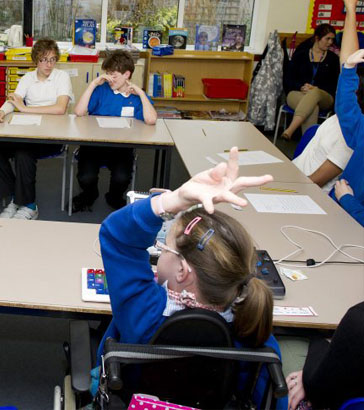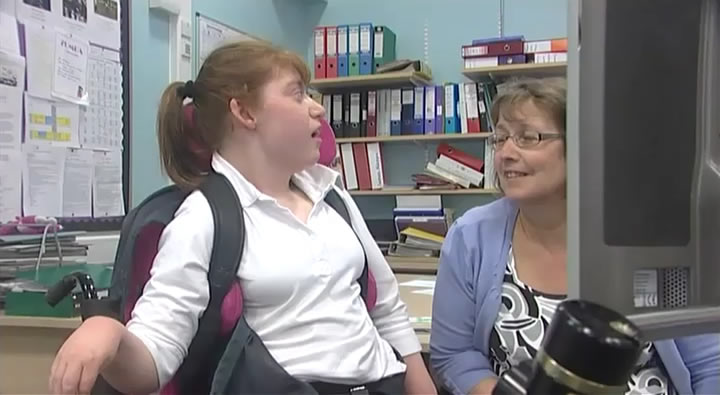
What do you think are the key elements of effective communication?
Effective communication requires the smooth integration of:
- Visual skills, eg timing of eye-contact and averting eyes.
- Listening.
- Speaking.
- Action, eg use of gestures, judging how close to stand.
Communication is deceptively complex as it not only requires motor skills and co-ordination, but also the cognitive abilities of recall, selectivity and timing, and emotional regulation appropriate to the context.

Children with SLD/PMLD/CLDD do not pick up language skills from exposure to their environment as spontaneously as the typical child. This means that they need a more managed communication environment. This helps them to acquire language and to use it appropriately across contexts – whether in the playground, the classroom or beyond school.
Watch this video clip in which Gill, a teacher, talks about the way Becky uses AAC. Notice how the school has made it possible to use her communication aid in social situations a well as in the classroom.
Watch this clip in which girls with speech, language and communication difficulties take part in a social communication session.
What are the supportive elements that enable the girls to take part in the conversation?
Some answers
Your answer may have included the following:
- An opportunity for social exchange.
- A group leader who knows the group well, knows what they are interested in and listens to them.
- A small supportive group where children feel confident to speak.
- Speech supported with signs and symbols.
- Encouragement to talk to each other, not just to the adult leading the group.
- Additional adult support for those who need it.
- The correct form of communication for each child, primed with relevant vocabulary/phrases.
- Time to respond, and for Lauren, prior knowledge of the topic to be discussed so that she can prepare.
- A teacher who holds the conversation together.
Return

A supportive communication environment enables children to make great strides with their language. In such an environment children will:
- Hear new models of language;
- Feel confident to make new attempts to communicate and experiment with grammatical rules; and
- Become more fluent through exposure to language.

